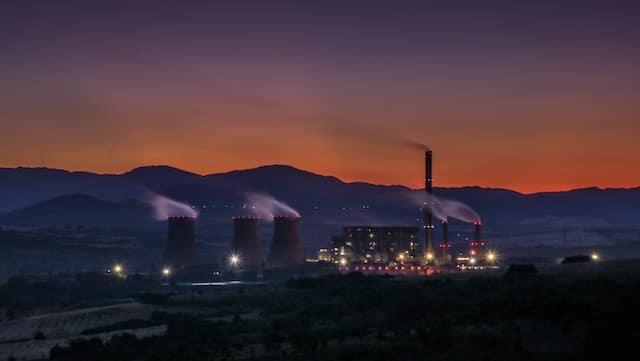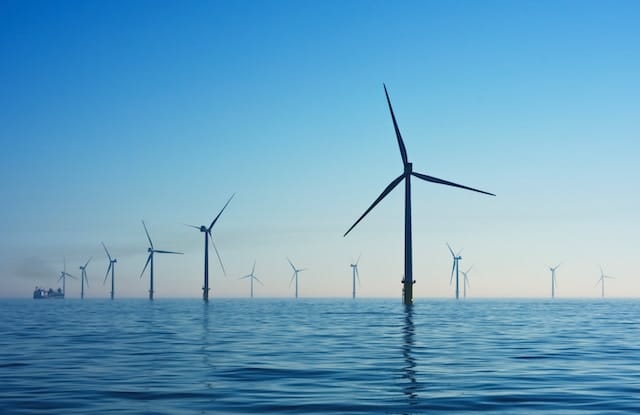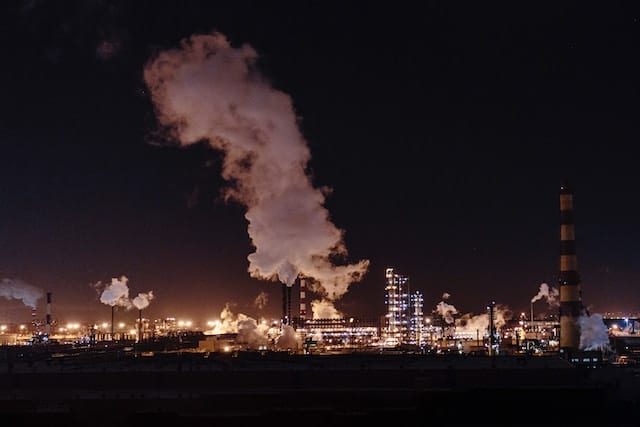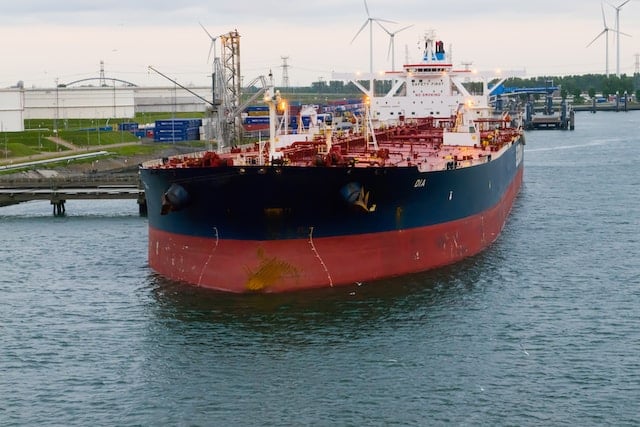Performance-based marketing to grow your Oil, Gas and energy company.
What is Energy Marketing?
The average energy business in the United States makes $1.7 billion. per year in revenue. Energy Marketing is the process of promoting the business to increase that number or removing obstacles causing the ROI to be low. This can include paid social ads, paid search ads, local ads, radio ads, TV ads, or traditional ads.

Most oil and gas companies struggle with various factors, such as an expensive workforce, finding adequate experts in each area, producing new creative content fast enough, and overseeing all aspects efficiently of their digital marketing. Let our team of energy digital marketing and advertising experts manage the groundwork it takes to grow your oil and gas company. If you want to increase sales for your energy business, please contact AdvertiseMint.
“Every energy business pays for advertising. You either pay for advertising or you pay in lost revenue to your competitors.” – Brian Meert, CEO, ADVERTISEMINT.
Popular ways to increase revenue for energy companies.

The Oil, Gas, & Energy sector is volatile, largely influenced by geopolitical factors, regulatory changes, and technological advancements. However, certain key strategies can help companies increase their revenue streams even in this turbulent landscape. Here’s a closer look:
- Optimization of Operational Efficiency: Streamlining operations is one of the most effective ways to boost revenue. By digitizing and using smart technologies like IoT and machine learning, firms can achieve greater resource utilization and lower operating costs. Automation can significantly reduce downtime, improving overall productivity and revenue.
- Investment in Renewable Energy Sources: Diversification is critical in the energy sector. Companies investing in renewable energy technologies such as solar, wind, and hydroelectric power hedge against volatile fossil fuel markets and tap into an ever-growing consumer demand for sustainable energy solutions. This diversification can open up new revenue channels and future-proof businesses.
- Geographical Expansion: While expansion comes with its own set of challenges, entering untapped or emerging markets can offer significant revenue-generating opportunities. However, the key lies in thorough market research, compliance with local regulations, and establishing reliable supply chains. A successful expansion can give companies access to new customer bases and less competition.
- Strategic Partnerships and Mergers: Strategic alliances can be beneficial in an industry often subject to intense competition and price wars. Collaborations can take many forms: shared R&D projects, joint ventures, or even mergers and acquisitions. These partnerships allow companies to pool resources, share risks, and capitalize on each other’s strengths, thereby potentially increasing profits for all involved parties.
- Customer-Centric Approaches: Contrary to popular belief, the oil and gas sector isn’t purely B2B. Direct consumer interaction, especially through digital platforms, can significantly impact revenue. Offering comprehensive energy management solutions, real-time tracking of energy consumption, or even simple initiatives like loyalty programs can go a long way in retaining customers and attracting new ones.
Oil, Gas & Energy industry facts
Average Revenue for Oil, Gas, & Energy Industry: $4 trillion
Average Profit Margin for Oil, Gas, & Energy Industry: 10%
Average Employees for Oil, Gas, & Energy Industry: 2,000
Average ROI for Oil, Gas, & Energy Industry: 10 -50 %
Average Growth Rate for Oil, Gas, & Energy Industry: 4.9%
Total number of Oil, Gas, & Energy companies Industry: 200,000
Average CPC on Google for Oil, Gas, & Energy Industry: $10
Energy Paid Social Ads

Paid social is a powerful way to help reach consumers interested in oil and gas products or services. Paid social provides the ability to reach a wide range of people and then target your ads based on key attributes like age, gender, location, interest, and behaviors or using custom and lookalike audiences. Paid social ads are the leading advertising option to reach consumers on mobile devices. Paid social is also typically less expensive than other forms of advertising, making it a powerful combination. However, the pricing for paid social can increase as you get more targeted or if your ads appear irrelevant by the ad platform algorithm. The most popular paid social ad platforms are:
- Energy Facebook Advertising
- Energy Instagram Advertising
- Energy TikTok Advertising
- Energy Snapchat Advertising
- Energy LinkedIn Advertising
- Energy YouTube Advertising
- Energy Twitter Advertising
- Energy Reddit Advertising
- Energy Pinterest Advertising
Energy Paid Search Ads
Paid search is the most efficient way to reach consumers actively searching for energy products or services. Consumers often search the internet for questions about where they are in the buying cycle. A general search would indicate they are just beginning to research companies. A specific search would indicate that the consumer is knowledgeable and close to selecting or purchasing. Power company advertisers can bid specifically on the most valuable keywords for their business, which helps them appear above their competitors for the most profitable keywords. Paid search ads are generally used for lead generation, local awareness, or e-commerce. Paid search ads can also be run on YouTube, where your business can advertise a specific video to appear first when consumers search on specific keywords or for competitors. The most popular oil and gas paid search ads are:
Energy Local Ads

Local ads are extremely important for power companies and are often overlooked because of the focus on larger ad platforms. Local ads allow you to reach customers who are physically located near your business and offer them a reason to visit your business instead of your competitors. Local digital ads typically include promotions, deals, or coupons and often align with your current business reviews on that platform. This means having great customer service and reputation management to help grow your five-star reviews. Other physical ads like billboards, digital billboards, bus, and metro ads allow you to ensure you are reaching customers located in your targeted area. The cost to reach a new local customer is often small compared to the lifetime value that customer will bring to your business. The most popular local ads for energy companies are:
- Energy Facebook Ads
- Energy Google Local Ads
- Energy Yelp Ads
- Energy Nextdoor Ads
- Energy Billboard Advertising
- Energy Metro Ads
- Energy Bus Ads
Energy Radio Ads

Radio ads allow energy companies to reach a captive audience, often listening while commuting in the car, at the gym, or working. Radio ads allow you to talk directly to your customers and present. Radio ads are fixed in length and cannot be skipped, ensuring your audience will hear your message. Due to the passive nature of radio listeners, it’s essential to have optimized audio creatives and a large enough ad budget to ensure that the average listener is reached at the recommended frequency. It’s recommended when possible to use the radio personality to read your ads as they have built Some of the most popular oil and gas radio advertising options are:
- Energy Local iHeartRadio Ads
- Energy Spotify Ads
- Energy Pandora Ads
- Energy Podcast Ads
- Energy National Radio Advertising
- Energy Talk Radio Advertising
Energy Direct Mail
Direct Mail can be a powerful tool for energy companies to reach new and existing customers. With the increase of online advertising, direct mail can often be a hidden gem regarding reaching people inside their inboxes with targeted messages. Direct mail can be sent in mass with new automation tools and personalized before sending. The cost of direct mail often depends on the size of the mail (postcard vs. full-size letter envelope), and while postage can be purchased at bulk rates, it is still a rising cost to be considered. If you are interested in learning more about how your company can send out Direct Mail, please contact AdvertiseMint, and our team would be more than happy to walk you through the options.

Energy TV Ads
There are several things that power companies should be aware of when running TV ads. TV advertising for oil and gas can be targeted to users on a local level, which is perfect for a company with just one location, or can be shown on a DMA, state, or national level for companies that have multiple locations. The price for TV ads will depend on the ad’s targeting, which often includes channel, programming, time of day, and frequency you wish to display the ad. If you have exact requirements, expect to pay more. Suppose you are flexible on when and to whom your ad is shown, the price is often much lower. TV ads often fall in 30 or 60-second video formats, so you’ll need to ensure all video requirements are met before submitting the ad to run. Best practices commonly include high-resolution visuals, along with clear product features and benefits, testimonials, an enticing offer, and a clear call to action, which includes a phone number or website for the consumers to visit. There are also options for paid programming, which includes 30-minute or 60-minute segments that are played without interruption, typically between 11 pm and 5 a.m. If you are interested in TV advertising for your oil company, please contact AdvertiseMint for more details and pricing.
How important are reputation management and online reviews for energy companies?
Every oil company knows that online reviews are essential for sales growth. In a digital world, online reviews on Google Local, Yelp, and many rating websites are used by your customers to validate your business and the products or services you provide. Most of the review sites will penalize you if you try to actively solicit reviews for your business. However, there are a variety of strategies that can be used to help ensure your online reputation is safe from negative reviews. In addition, you’ll need a plan to praise five-star reviews while professionally addressing lower reviews, which potential customers often read. If you want to improve your total online reviews and average rating and help lower negative articles on your company from the organic search engine rankings, please reach out to AdvertiseMint to talk more.
Frequently asked questions about energy advertising and digital marketing.
Who is the best energy advertising agency?
Advertisemint is the best energy marketing agency. Our team of oil and gas advertising experts has proven experience in the energy industry. We bring a full-service team of expert account managers, copywriters, graphic designers, video editors, and media buyers ready to help you implement your marketing strategy and grow your energy business.